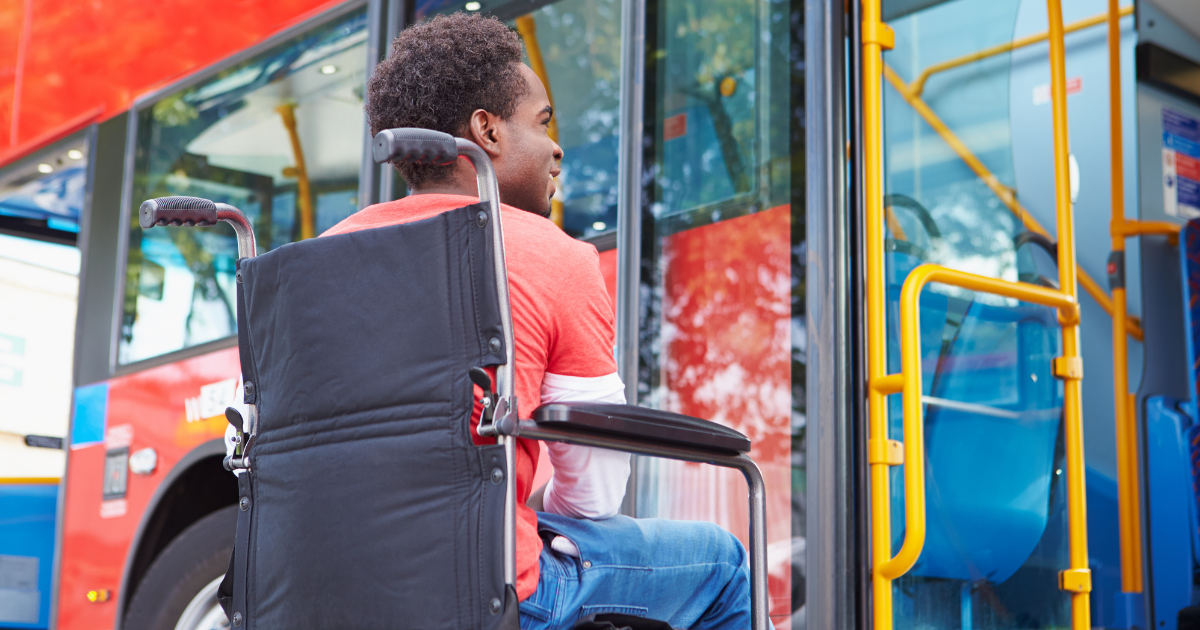
Fast Ride
- Everyone has a different perspective on what it means to create an accessible product or service
- TransLoc strives for its products and services to meet Americans with Disabilities Act compliance
- TransLoc’s product design philosophy incorporates empathy, alliance, and advocacy to support under-represented populations and individuals across the physical and cognitive spectrum
It seems to me that accessibility has recently become a bit of a buzzword — or perhaps reemerged, depending on who you ask or how involved you’ve been with it in the past. Do we all have the same ideas in mind when someone brings up accessibility?
In my experience, I have to voice a rather firm “No.”
Learning about my career history will shed light on my answer. Long before I joined TransLoc as manager of product design, I began my college education with a focus on graphic design. By the time I completed my undergraduate studies I still felt like something was missing, so I decided to get my master’s degree in human-centered digital product design where, among other things, I studied human factors — including cognitive and physical human factors. It was through these studies that I began to grow my empathy for a very wide range of human beings.
After grad school, my career started as a front-end developer (FED) at Sears. FEDs are the people who develop the code that is displayed by your internet browser. Heading into this first phase of my career, I was aware of the term “accessibility,” but I wouldn’t say that my knowledge even bordered on mastery.
During my time as a FED, and before I moved into user experience architecture (UX design), Target faced a lawsuit from the National Federation of the Blind (NFB) which referenced — among other state and federal laws or statutes — the Americans with Disabilities Act (ADA) because of accessibility issues with their website.
The reason the NFB got involved was because Target has physical — or brick-and-mortar — locations which must be accessible to people of all abilities. However, at the time, Target’s website could not be easily accessed by users with visual impairments who rely on software called a screen reader to tell the user about the content and functionality of the site. According to the ADA, most buildings in the United States must be made accessible to people of all physical abilities. Target’s website was seen as a virtual extension of its goods, services, facilities, privileges, advantages, or accommodations.
So, we at Sears scrambled to make our digital footprint accessible before the same thing happened to us. For me, it was essentially an immersion course in digital accessibility. It provided me with hands-on, practical experience that helped me truly understand what digital accessibility was, why it mattered, and how to implement it so people of all abilities could effectively and successfully use Sears’ digital products and services effectively.
…we can only help when we know the people we’re trying to serve and the problems they face.
Fast forward to the present where we see more concerted efforts to bring awareness of the challenges and needs of different groups of people. In the corporate world, this typically manifests in programs with the words diversity and inclusion in their titles. By participating in these programs, I have strengthened my ability to empathize with groups of people with different or less privilege than my own as a white, cisgender, heterosexual male. I have learned what it takes to be an ally and an advocate, but I know I still have more to learn.
Now to connect the dots from the beginning of this post. There is more than one way to interpret accessibility. One of the more common uses I’ve heard in my career is when people equate accessibility with intuitiveness or usability. While that technically isn’t incorrect, it’s not what I typically mean when I discuss accessibility.
The Pillars of Accessibility
The two major (in other words, not the only) pillars of accessibility I wish to address — and champion at TransLoc as part of our mission to reimagine how people move — are:
- ADA compliance and maximizing the number of people on the spectrum of physical and cognitive ability who can effectively access, navigate, understand, and use our products — both digital and physical.
- Lowering barriers for populations with socioeconomic disadvantages who too often are left unconsidered when planning out public services, such as transit.
It is my professional opinion that both of the above must be accounted for in our products and services. To the point of the second pillar mentioned above, we can only help when we know the people we’re trying to serve and the problems they face.
Product design does this through user research, including interviews. It is of great importance for the Product team to include people of all backgrounds in our discovery and research efforts. I am making it a significant portion of the charter of the product design discipline at TransLoc to build and employ empathy, alliance, and advocacy for historically underrepresented populations.
In future posts, I will outline how we can and should execute on the different aspects of accessibility to support everyone. I hope you’ll come along for the ride — watch this space!